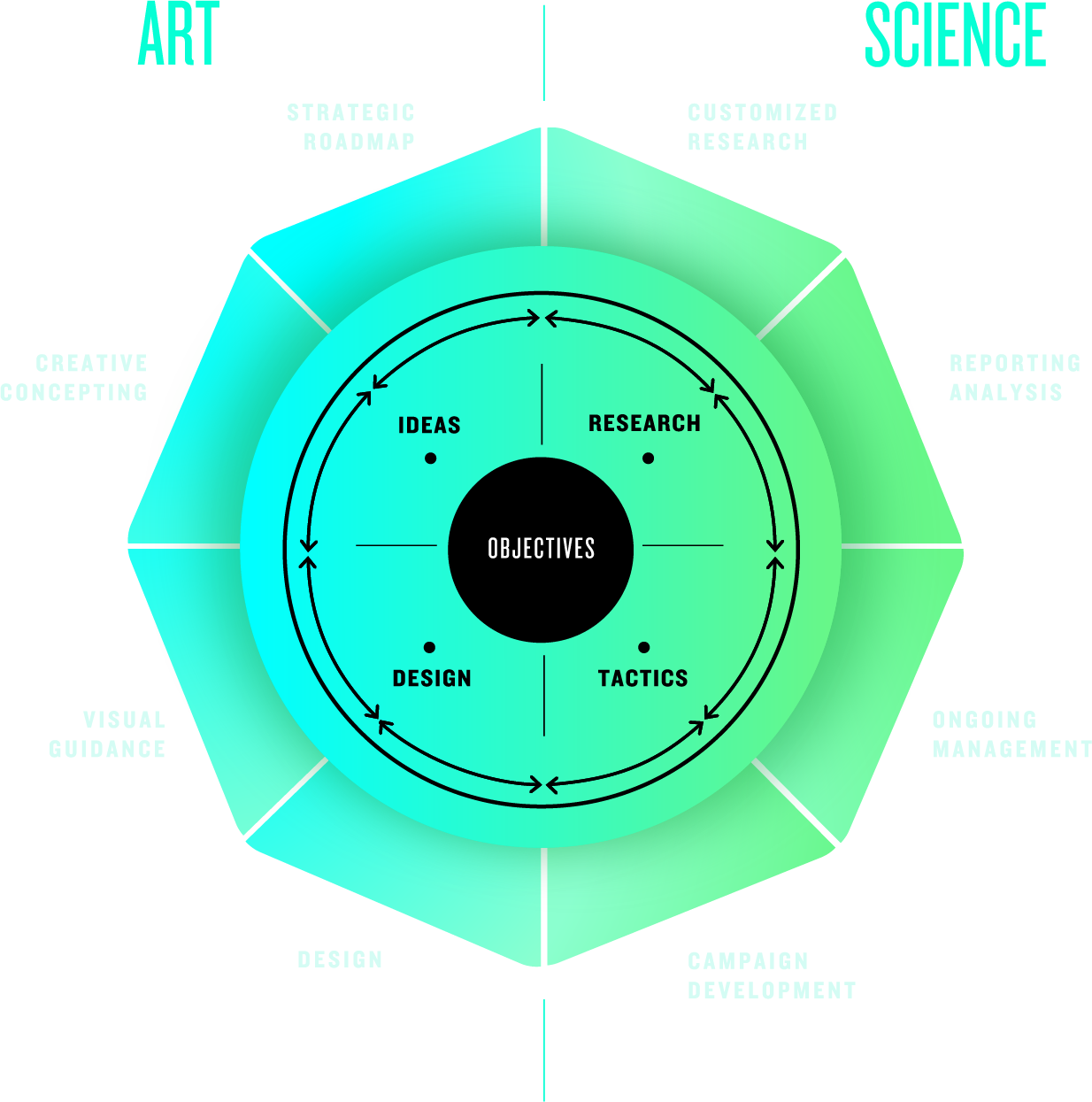
Marketing Management as an Art and Science
While marketers typically understand the art and science of their craft, some may not appreciate the marriage between the two.
While in some respects the arts and sciences of marketing management operate as two distinctive approaches, the reality is that the combination of these disciplines is what leads to truly innovative ideas. It’s also what separates good marketers from great ones.
Art challenges what we think to be normal by showing us the possibility of seeing something from a different perspective – which then influences the science of what we see. It is that imaginative exploration that results in extraordinary ideas that often morph into scientific breakthroughs.
There are few instances where the arts and sciences have converged more successfully than at the MIT Media Lab. Under the leadership of Neri Oxman, the Lab has produced some of the most incredible works of art. One of the most notable installations was the Silk Pavilion, an exhibit that manipulated 6,500 silkworms into creating a large polyhedral dome. The installation involved engineering, sericulture, and modeling the sun in the room to manipulate the behavior of the worms.
While not all of us have the minds and resources available at MIT, we can still aspire to create marketing that can rival any work of art. Once you have embraced the idea that there is an art and science to marketing management you will begin to see the difference it makes in developing extraordinary marketing.
Marketing Management as an Art and Science Team Infrastructure
Bringing the arts and the sciences together requires a well-thought-out organizational structure that can address today’s sales and marketing challenges. These structures are typically built based on agile marketing best practices (3-to-4-week sprints), which are used to enhance a firm’s ability to make smarter and faster decisions.
We’ve developed the following infographic to help illustrate how the art and science of marketing management work in an agile marketing environment.
The infographic demonstrates how the effective combination of marketing arts and sciences can deliver against program objectives. While the teams under each approach have unique specializations, they both are focused on the same underlying outcomes.
As you can see, the graphic is divided into two main sections on the left-hand side you have the Arts and on the right-hand side, you have the Sciences. Under each of these two sections, there are two teams with unique specializations. Under Science, you have the Research and Tactical teams – and under Art, you have the Idea and Design teams.
Each of these teams are responsible for delivering on their specializations in support of the program objectives – which can be found in the core of the infographic. The objectives are placed at the core to ensure that each team is focused on the same underlying outcomes.
If we were to bring the infographic to life following agile marketing best practices, reoccurring sprints would be conducted in each quadrant, starting at the core and moving outward towards the intended results. Once a sprint is complete the output of the work would be passed counterclockwise to the next team in the next quadrant.
One rotation (or cycle) would play out like this: the first quadrant, made up of the Research team would pull together and analyze everything they can about the company, its clients and the industry at large. The results of that research would then be passed along to the Idea team so they can distill that information down into a strategic roadmap and creative concepts. The roadmap and concepts would then be handed off to the Design team where they would bring everything to life through visual representations. At the final stage, the tactical team would execute the marketing campaign/program and report the results to the other teams. (Nice! Like this explanation)
This process would revolve in a continuous cycle, with each team’s contributions used by the proceeding team to execute on their part of the assignment. The data is used for continuous measurement and for making refinements along the way. The input from one quadrant would become the output for another.
Benefits of the Art and Science of Marketing Management
The ‘art and science’ structure is built to support a well-thought-out process. It is vital to the success of your marketing programs that you follow a process that unearths the most original ideas. The kind of ideas that challenge the way people think and mold their perceptions of your brand.
Understanding the art and science of marketing management and applying its structure to your programs will greatly benefit your business in the following ways:
-
- Focus on Objective – The structure will ensure that your team understands your strategic objectives and rally around your goals, after all it is at the core of everything they do.
- Team Unity – The structure helps contribute to team unity across departments because it reinforces the importance of each teams’ contributions while providing a visualization of how that impacts other groups.
- More Ideas – The art and science method, encourages both scientific thought and artistic ingenuity from all departments giving you a greater breadth of ideas.
- Better Collaboration – When passing information from one team to the next, there is an increase in a collaboration that positively influences outcomes.
The art and science marketing management structure doesn’t have to be made up of all internal resources either, think of how you would apply this structure when working with an agency or other partners.
All too often marketers think that their talents reside on the artistic or scientific side of marketing. That they are either left or right-brained thinkers. But the reality is that to do what we do – and do it well – we need to be able to live on both sides. It is possible to be both artistic and scientific at the same time.

